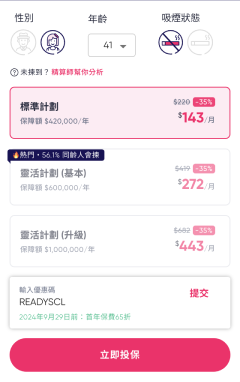Internal Rate of Return
The “Internal Rate of Return” (IRR) can be used to calculate the expected returns under different cash flow situations, and is a reliable indicator for evaluating future expected returns.
In academic terms, IRR refers to a discount rate through which the net present value (NPV) of cash flows at different periods is zero. What is the net present value? NPV is the sum of all expected future expenditures and received cash flows discounted to today’s value. This may be too academic, is there a simpler explanation for the average person to understand?
Simply put, IRR can also be understood as the expected return rate when the present value of all cash outflows during the entire investment period is equal to the present value of all cash inflows.
Why does it have to be so complicated? Because in finance, money has a time value. The same amount of money received at different times has different values (present values) relative to today. For example, receiving 1 million in 1 year and 10 years later have different actual values. Therefore, when calculating the rate of return, it is necessary to consider when this cash flow occurred.
Here’s an example with 2 investment projects:
- Project A: Invest $15,000 on the first day, invest an additional $25,000 after 1 year, and the total amount of investment is $40,000. Then roll it over for 3 years, and at maturity, receive $68,800.
- Project B: Invest $10,000 on the first day, invest an additional $10,000 after 1 year, and invest another $18,000 after 2 years, for a total investment of $38,000. Then roll it over for 2 more years, with a total investment period of 5 years, and at maturity, receive $62,800.
Please refer to the detailed cash flow in the table below. Which investment project is more attractive in terms of returns? On the surface, both investments have a term of 5 years, and Project A can earn $28,800 ($68,800 – $15,000 – $25,000), while Project B can only earn $24,800 ($62,800 – $10,000 – $10,000 – $18,000), making Project A seem to be more attractive. However, if we consider the time factor, the return (IRR) of Project B is actually more attractive. This is because Project A has invested more money earlier.
Cash flow and present value table for Project A
| Time | Cash Flow | Present Value (PV) |
| Today | -$15,000 | -$15,000 |
| Year 1 | -$25,000 | -$22,095 |
| Year 2 | $0 | $0 |
| Year 3 | $0 | $0 |
| Year 4 | $0 | $0 |
| Year 5 | $68,800 | $37,095 |
| Total | $28,800 | NPV = 0 |
| IRR | 13.15% |
Cash flow and present value table for Project B
| Time | Cash Flow | Present Value (PV) |
| Today | -$10,000 | -$10,000 |
| Year 1 | -$10,000 | -$8,772 |
| Year 2 | -$18,000 | -$13,852 |
| Year 3 | $0 | $0 |
| Year 4 | $0 | $0 |
| Year 5 | $62,800 | $32,624 |
| Total | $24,800 | NPV = 0 |
| IRR | 13.99% |
As seen, based on the calculated IRR, the net present value (NPV) of both investment projects is 0, indicating that the present value of all cash outflows is equal to the present value of all cash inflows. This means that at this interest rate, all cash outflows can be exchanged for reasonable cash inflows. Therefore, IRR can also be understood as the expected return after expected cash outflows and inflows.
Which insurances involve internal rate of return (IRR)?
If the insurance product you are investing in has an expected return, you need to take the internal rate of return into account to ensure that the loss of liquidity during the period is worth it.
How to calculate IRR?
You can input all cash flows into Excel as shown in the table above, and then calculate using the IRR() function. Note that the IRR() function can only calculate fixed-term cash flows.
